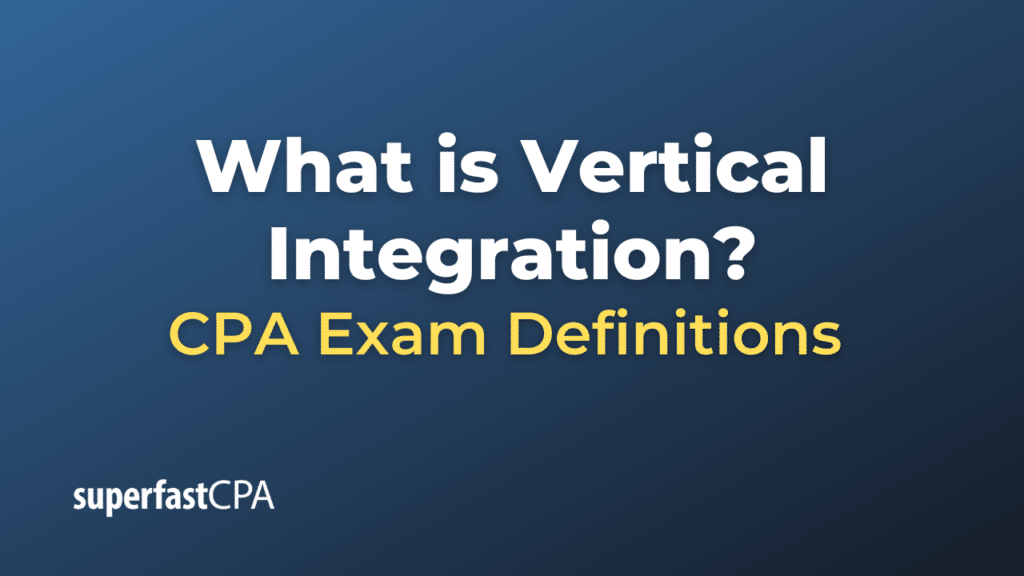Vertical Integration
Vertical integration is a business strategy where a company takes control over multiple stages of its production, distribution, and/or sales processes. By owning or controlling these different steps, the company can reduce costs, improve efficiency, and gain more control over its value chain. Vertical integration can take two forms:
- Forward Integration: This involves taking control over downstream activities in the value chain, such as distribution and retailing. For instance, a car manufacturer might own its own dealerships.
- Backward Integration: This involves taking control over upstream activities, like sourcing raw materials or components. For example, a furniture manufacturer might own its own lumberyard or sawmill.
Advantages of Vertical Integration:
- Cost Savings: By controlling more of its supply chain, a company can reduce costs by eliminating the markup charged by suppliers and intermediaries.
- Quality Control: Owning different stages allows a company to enforce quality control measures across the value chain.
- Coordination: Vertical integration often results in smoother coordination of each step in the production and distribution process.
- Competitive Advantage: Control over the value chain can serve as a barrier to entry for other companies.
Disadvantages of Vertical Integration:
- High Costs : Acquiring new business units or setting up new operations can be expensive and risky.
- Reduced Focus: Taking on additional stages of production or distribution can spread a company’s resources and attention thin, making it less effective in its core operations.
- Market Risks : If the market for raw materials or finished products fluctuates, the vertically integrated company could experience negative financial impacts on multiple fronts.
Example of Vertical Integration
Let’s take the example of a fictional coffee brand, “CuppaJoe,” to illustrate vertical integration.
Initial Scenario:
Initially, CuppaJoe operates as a specialty coffee shop chain, sourcing its coffee beans from multiple suppliers around the world. The company has no control over coffee cultivation or the initial processing of the coffee beans. It only controls the roasting, brewing, and retailing processes.
CuppaJoe Decides to Integrate Vertically:
Step 1: Backward Integration
- CuppaJoe purchases a coffee farm in Colombia, which allows the company to grow its own coffee beans.
- This move helps CuppaJoe ensure the quality of the beans and also gives them control over the cost of this key raw material.
Step 2: Mid-Chain Integration
- CuppaJoe decides to build its own coffee roasting and processing facility.
- By doing so, it can control another critical part of the quality equation and also improve efficiency by customizing the roasting process to its specific needs.
Step 3: Forward Integration
- CuppaJoe, initially only a retailer, decides to distribute its packaged coffee beans and coffee products through its own online store.
- It also starts a subscription service, delivering coffee directly to homes.
Step 4: Further Forward Integration
- CuppaJoe opens its own branded coffee shops where it exclusively sells its own coffee.
- The company then takes it a step further by launching a mobile app to facilitate easier ordering, which is tied to its own distribution system.
Results:
- Cost Savings: By owning the coffee farms, CuppaJoe eliminates the markup that suppliers would have charged. Additionally, by roasting its own coffee, it can cut out the middleman, further reducing costs.
- Quality Control: Controlling the process from bean to cup allows CuppaJoe to implement strict quality control measures, ensuring a consistent product.
- Coordination and Efficiency: Owning multiple stages of production allows for better coordination, quicker decision-making, and a more efficient value chain.
- Competitive Advantage : The vertically integrated structure makes it difficult for competitors to match CuppaJoe’s pricing and quality, thereby creating a strong competitive advantage.
This example illustrates how CuppaJoe has become a vertically integrated coffee company, controlling its value chain from coffee cultivation right up to retail sales, thus gaining several strategic advantages.













